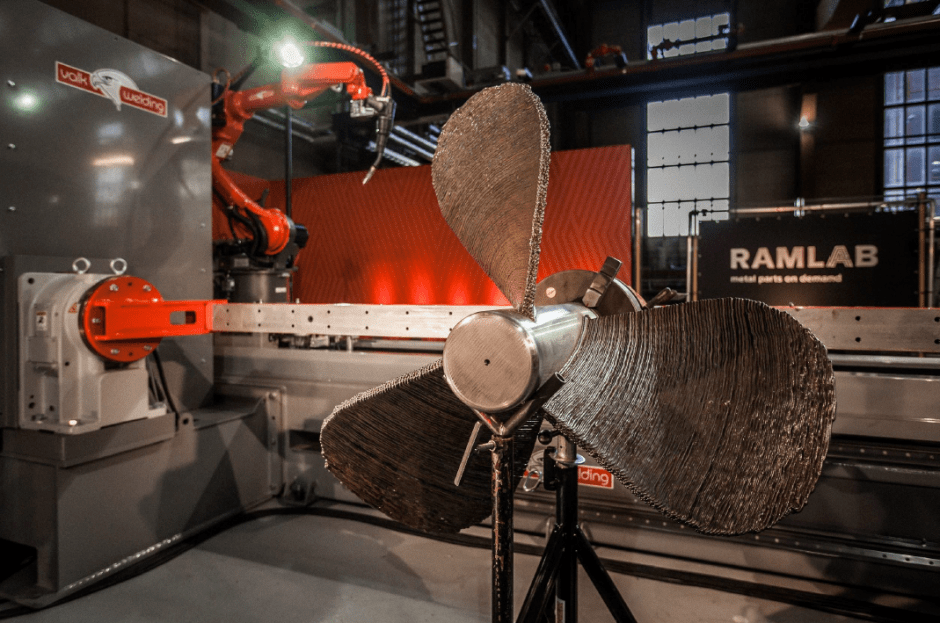
The company’s collaboration with The Port of Rotterdam's Additive Manufacturing Fieldlab (RAMLAB) is a prime example of how Autodesk is helping to solve a costly problem whilst simultaneously giving its customer a commercial advantage.
Robin Smith, Pre-Sales Applications Manager – Autodesk told The Engineer that it can cost $1m per day for a large container vessel to stay in port whilst a replacement is found for a damaged propeller.
Smith explained that Autodesk is helping the Port of Rotterdam in its ambition to build replacement parts on site using directed energy deposition. Smith said the solution is effectively PowerMill with a robot and additive tool kit plugged into it, driving the robot with a welding gun on the end of it, laying down material.
“Once it’s been laid out it can then be subtractively removed by milling it away to arrive at the final shape,” he said. “Again, it’s a really interesting technology – a combination of additive and subtractive working with robots. The goal is a production cell for them where they can actually do this.
“There’s a focus on getting those [container ships] moving as quickly as they possibly can,” he added. “This technology really helps with that; it’s giving the Port of Rotterdam competitive separation because no other port around the world can offer that level of service.”
With increasing automation comes fear surrounding job losses, which many at MACH were quick to dispel. There will be occasions when a process can be automated that would otherwise have been injurious to health, and an example can be found with the manual trim of carbon fibre parts.
Smith explained that PowerMill - traditionally used for driving machine tools - is now being used to drive robot cells to do things such as trimming carbon fibre parts.
“That’s not looking to detract from jobs that are out there, it’s really looking to re-skill people to allow them to do less dirty work,” he said. “Imagine trimming around a carbon fibre part with a traditional hand trimming tool, it’s a very dirty and dusty operation that isn’t good for health in the long term.
“If we can take those people and allow them to program that offline and then drive the robot in a cell with good extraction and so on, then that’s attractive.”

An eye-catching feature of the Autodesk stand was the BAC Mono car sat at its centre. BAC Mono uses Autodesk products to design and manufacture its cars and Smith said that one of the prototype applications they’ve been working on is to lightweight components.
“The ability to take a standard solid block and then effectively honeycomb the inside of it using light-weighting technology from a product called NetFabb…really keeps strength in the component whilst taking the weight out of it,” he said. “That’s a really exciting and interesting new technology that could only really be entertained with the advent of additive technology coming along.”
Autodesk was on stand 600 in Hall 17 during MACH 2018.
CATCH UP WITH ALL THE ENGINEER'S COVERAGE FROM THIS YEAR'S MACH HERE




Glasgow trial explores AR cues for autonomous road safety
They've ploughed into a few vulnerable road users in the past. Making that less likely will make it spectacularly easy to stop the traffic for...